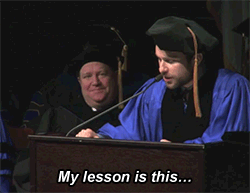Smparticle2 - Untitled

More Posts from Smparticle2 and Others

“I was on a leadership team in 5th grade. At the end of the year we were supposed to take a trip to Washington DC. We held fundraisers and everything. But when it was time to go, I didn’t have the identification papers to buy a plane ticket. So our teacher Ms. Rivera decided that we’d take a bus. Just so I could go too. That trip changed my life. It made me want to be a lawyer. And Ms. Rivera became one of the closest people in my life. She always kept in touch. She basically watched me grow up. One time in high school I got in a huge fight with my mom, and Ms. Rivera came and took me on a long car ride. I started to tell her everything. I told her about a recent break-up, and how I smoked weed, and ‘I did this,’ and ‘I did that.’ She just listened to everything. Then she started telling me about her life too. She told me that she’d been in an abusive relationship. I’d always thought her life was perfect because she was a guidance counselor. But she’d been through so much too. When it was came time to apply for college, Ms. Rivera was the one who helped me apply for DACA. She told me about the TheDream.us scholarship. I didn’t even want to apply. I was ready to give up. I’d just accepted that I’d always work in restaurants like my mom. But Ms. Rivera made me apply. She said: ‘What happened to that girl who wanted to be a lawyer?’ I learned that I got the scholarship in February. They’re paying for my entire college. Ms. Rivera was so proud of me. She kept saying: ‘I told you so.’”










Dead Poets Society (1989)
Director - Peter Weir, Cinematography - John Seale
“Boys, you must strive to find your own voice. Because the longer you wait to begin, the less likely you are to find it at all. Thoreau said, "Most men lead lives of quiet desperation.” Don’t be resigned to that. Break out!“

This car race involved years of training, feats of engineering, high-profile sponsorships, competitors from around the world and a racetrack made of gold.
But the high-octane competition, described as a cross between physics and motor-sports, is invisible to the naked eye. In fact, the track itself is only a fraction of the width of a human hair, and the cars themselves are each comprised of a single molecule.
The Nanocar Race, which happened over the weekend at Le centre national de la recherché scientific in Toulouse, France, was billed as the “first-ever race of molecule-cars.”
It’s meant to generate excitement about molecular machines. Research on the tiny structures won last year’s Nobel Prize in Chemistry, and they have been lauded as the “first steps into a new world,” as The Two-Way reported.
Microscopic Cars Square Off In Big Race
Image: CNRS





(Image caption: Young neurons (pink), responsible for encoding new memories, must compete with mature neurons (green) to survive and integrate into the hippocampal circuit. Credit: Kathleen McAvoy, Sahay Lab)
Making memories stronger and more precise during aging
When it comes to the billions of neurons in your brain, what you see at birth is what get — except in the hippocampus. Buried deep underneath the folds of the cerebral cortex, neural stem cells in the hippocampus continue to generate new neurons, inciting a struggle between new and old as the new attempts to gain a foothold in the memory-forming center of the brain.
In a study published online in Neuron, Harvard Stem Cell Institute (HSCI) researchers at Massachusetts General Hospital and the Broad Institute of MIT and Harvard in collaboration with an international team of scientists found they could bias the competition in favor of the newly generated neurons.
“The hippocampus allows us to form new memories of ‘what, when and where’ that help us navigate our lives,” said HSCI Principal Faculty member and the study’s corresponding author, Amar Sahay, PhD, “and neurogenesis—the generation of new neurons from stem cells—is critical for keeping similar memories separate.”
As the human brain matures, the connections between older neurons become stronger, more numerous, and more intertwined, making integration for the newly formed neurons more difficult. Neural stem cells become less productive, leading to a decline in neurogenesis. With fewer new neurons to help sort memories, the aging brain can become less efficient at keeping separate and faithfully retrieving memories.
The research team selectively overexpressed a transcription factor, Klf9, only in older neurons in mice, which eliminated more than one-fifth of their dendritic spines, increased the number of new neurons that integrated into the hippocampus circuitry by two-fold, and activated neural stem cells.
When the researchers returned the expression of Klf9 back to normal, the old dendritic spines reformed, restoring competition. However, the previously integrated neurons remained.
“Because we can do this reversibly, at any point in the animals life we can rejuvenate the hippocampus with extra, new, encoding units,” said Sahay, who is also an investigator with the MGH Center for Regenerative Medicine.
The authors employed a complementary strategy in which they deleted a protein important for dendritic spines, Rac1, only in the old neurons and achieved a similar outcome, increasing the survival of the new neurons.
In order to keep two similar memories separate, the hippocampus activates two different populations of neurons to encode each memory in a process called pattern separation. When there is overlap between these two populations, researchers believe it is more difficult for an individual to distinguish between two similar memories formed in two different contexts, to discriminate between a Sunday afternoon stroll through the woods from a patrol through enemy territory in a forest, for example. If the memories are encoded in overlapping populations of neurons, the hippocampus may inappropriately retrieve either. If the memories are encoded in non-overlapping populations of neurons, the hippocampus stores them separately and retrieves them only when appropriate.
Mice with increased neurogenesis had less overlap between the two populations of neurons and had more precise and stronger memories, which, according to Sahay, demonstrates improved pattern separation.
Mice with increased neurogenesis in middle age and aging cohorts exhibited better memory precision.
“We believe that by increasing the hippocampus’s ability to do what it supposed to do and not retrieve past experiences when it shouldn’t can help,” Sahay said. This may be particularly useful for individuals suffering from post-traumatic stress disorder, mild cognitive impairment, or age-related memory loss.










Never be afraid to fail.
Watch all of ‘It’s Always Sunny in Philadelphia’s" Charlie Day’s inspiring commencement speech here.

Cathedrals Beach, Galicia
Behind a TED-Ed Lesson: Animation + Inspiration
To celebrate George Seurat’s birthday today, we thought we’d do a deep dive behind the scenes of one of our animated lessons, How do schools of fish swim in harmony?, which is about the concept of ‘emergence’ and whose animated style just so happens to have been largely influenced by the paintings of George Seurat and his contemporaries.

Emergence refers to the spontaneous creation of sophisticated behaviors and functions from large groups of simple elements, and can be used to explain the movements of ants, fish, and birds, as well as how the tiny cells in your brain give rise to the complex thoughts, memories, and consciousness that are you.

A Sunday Afternoon on the Island of La Grande Jatte, George Seurat (1884–86)
It’s kind of like a pointillist painting. When you zoom in real close, it’s just a collection of chaotic brush strokes. But take a few steps back, and you’ll see that all of those brush strokes are working together to illustrate a complex and detailed scene.

Pointillism stems from Impressionism, and depending on the artist’s technique, the size of the brush strokes vary, but are always visible. For example, Vincent van Gogh’s The Starry Night uses larger brush strokes in the night sky. Both the above and below concept designs show the animator of this lesson testing out how different brushstrokes interact to create depth within a scene. She decided that the swirling waters would make sense as large brushstrokes, which also offered contrast to allow the small fish to stand out.

George Seurat also employed a technique called ‘divisionism’, sometimes known as ‘chromoluminarism’, in which colors were separated into individual dots or patches which interacted optically. So, rather than relying on mixing colors, painters like Seurat and Paul Signac juxtaposed contrasting colors to allow for optical mixing - which in theory would produce more vibrant and pure colors than the traditional process of mixing pigments.

Circus Sideshow (Parade de Cirque), George Seurat (1887–88)
While designing this TED-Ed lesson, George Seurat and Paul Signac’s paintings provided inspiration not just for the brushstroke technique, but also for the color palette.

This GIF of the brain and it’s neural connections draws many of its colors from Seurat’s circus series palette, while the brighter colors - such as the ones used in the title GIF above - are drawn from the more vibrant colors commonly used by Paul Signac, like in the painting below.

Notre-Dame-de-la-Garde (La Bonne-Mère), Marseilles, Paul Signac (1905-06)

Animating this lesson was an opportunity to renew a sense of wonder in our ever complex universe, whether studying it up close or from afar. We hope that watching it might do the same for you!
From the TED-Ed Lesson How do schools of fish swim in harmony? - Nathan S. Jacobs
Animation by TED-Ed // Lisa LaBracio

(Image caption: Brain showing hallmarks of Alzheimer’s disease (plaques in blue). Credit: ZEISS Microscopy)
New imaging technique measures toxicity of proteins associated with Alzheimer’s and Parkinson’s diseases
Researchers have developed a new imaging technique that makes it possible to study why proteins associated with Alzheimer’s and Parkinson’s diseases may go from harmless to toxic. The technique uses a technology called multi-dimensional super-resolution imaging that makes it possible to observe changes in the surfaces of individual protein molecules as they clump together. The tool may allow researchers to pinpoint how proteins misfold and eventually become toxic to nerve cells in the brain, which could aid in the development of treatments for these devastating diseases.
The researchers, from the University of Cambridge, have studied how a phenomenon called hydrophobicity (lack of affinity for water) in the proteins amyloid-beta and alpha synuclein – which are associated with Alzheimer’s and Parkinson’s respectively – changes as they stick together. It had been hypothesised that there was a link between the hydrophobicity and toxicity of these proteins, but this is the first time it has been possible to image hydrophobicity at such high resolution. Details are reported in the journal Nature Communications.
“These proteins start out in a relatively harmless form, but when they clump together, something important changes,” said Dr Steven Lee from Cambridge’s Department of Chemistry, the study’s senior author. “But using conventional imaging techniques, it hasn’t been possible to see what’s going on at the molecular level.”
In neurodegenerative diseases such as Alzheimer’s and Parkinson’s, naturally-occurring proteins fold into the wrong shape and clump together into filament-like structures known as amyloid fibrils and smaller, highly toxic clusters known as oligomers which are thought to damage or kill neurons, however the exact mechanism remains unknown.
For the past two decades, researchers have been attempting to develop treatments which stop the proliferation of these clusters in the brain, but before any such treatment can be developed, there first needs to be a precise understanding of how oligomers form and why.
“There’s something special about oligomers, and we want to know what it is,” said Lee. “We’ve developed new tools that will help us answer these questions.”
When using conventional microscopy techniques, physics makes it impossible to zoom in past a certain point. Essentially, there is an innate blurriness to light, so anything below a certain size will appear as a blurry blob when viewed through an optical microscope, simply because light waves spread when they are focused on such a tiny spot. Amyloid fibrils and oligomers are smaller than this limit so it’s very difficult to directly visualise what is going on.
However, new super-resolution techniques, which are 10 to 20 times better than optical microscopes, have allowed researchers to get around these limitations and view biological and chemical processes at the nanoscale.
Lee and his colleagues have taken super-resolution techniques one step further, and are now able to not only determine the location of a molecule, but also the environmental properties of single molecules simultaneously.
Using their technique, known as sPAINT (spectrally-resolved points accumulation for imaging in nanoscale topography), the researchers used a dye molecule to map the hydrophobicity of amyloid fibrils and oligomers implicated in neurodegenerative diseases. The sPAINT technique is easy to implement, only requiring the addition of a single transmission diffraction gradient onto a super-resolution microscope. According to the researchers, the ability to map hydrophobicity at the nanoscale could be used to understand other biological processes in future.



-
 slackbwan reblogged this · 10 months ago
slackbwan reblogged this · 10 months ago -
 slackbwan liked this · 10 months ago
slackbwan liked this · 10 months ago -
 annajulia0648 liked this · 1 year ago
annajulia0648 liked this · 1 year ago -
 icyhot-icyhot liked this · 2 years ago
icyhot-icyhot liked this · 2 years ago -
 luthientinuvielss liked this · 3 years ago
luthientinuvielss liked this · 3 years ago -
 deus-in-absentiia liked this · 3 years ago
deus-in-absentiia liked this · 3 years ago -
 ceeluvzboobz liked this · 3 years ago
ceeluvzboobz liked this · 3 years ago -
 asoulfulbeing reblogged this · 3 years ago
asoulfulbeing reblogged this · 3 years ago -
 asoulfulbeing liked this · 3 years ago
asoulfulbeing liked this · 3 years ago -
 all-by-a-dead-poet liked this · 3 years ago
all-by-a-dead-poet liked this · 3 years ago -
 all-by-a-dead-poet reblogged this · 3 years ago
all-by-a-dead-poet reblogged this · 3 years ago -
 drummah-in-a-rocknroll-band liked this · 3 years ago
drummah-in-a-rocknroll-band liked this · 3 years ago -
 marsieonlife liked this · 3 years ago
marsieonlife liked this · 3 years ago -
 thefandomshavebrokenme liked this · 3 years ago
thefandomshavebrokenme liked this · 3 years ago -
 pretentious-strikes liked this · 3 years ago
pretentious-strikes liked this · 3 years ago -
 neilfuckingperrydeservedbetter reblogged this · 3 years ago
neilfuckingperrydeservedbetter reblogged this · 3 years ago -
 neilfuckingperrydeservedbetter liked this · 3 years ago
neilfuckingperrydeservedbetter liked this · 3 years ago -
 poetofthedyingstars liked this · 3 years ago
poetofthedyingstars liked this · 3 years ago -
 maisietheweltoncow reblogged this · 3 years ago
maisietheweltoncow reblogged this · 3 years ago -
 maisietheweltoncow liked this · 3 years ago
maisietheweltoncow liked this · 3 years ago -
 maryolive liked this · 4 years ago
maryolive liked this · 4 years ago -
 rebvlwoutcause liked this · 4 years ago
rebvlwoutcause liked this · 4 years ago -
 joyseekerss reblogged this · 4 years ago
joyseekerss reblogged this · 4 years ago -
 elxctric-film reblogged this · 4 years ago
elxctric-film reblogged this · 4 years ago -
 grumpp liked this · 4 years ago
grumpp liked this · 4 years ago -
 iamministerofchaos liked this · 4 years ago
iamministerofchaos liked this · 4 years ago -
 fuzzypsychicjudgesports liked this · 4 years ago
fuzzypsychicjudgesports liked this · 4 years ago -
 offendedshadows reblogged this · 4 years ago
offendedshadows reblogged this · 4 years ago -
 youandiareearth liked this · 4 years ago
youandiareearth liked this · 4 years ago -
 therainebeforesunshine reblogged this · 4 years ago
therainebeforesunshine reblogged this · 4 years ago -
 diprimas liked this · 4 years ago
diprimas liked this · 4 years ago -
 glidebylilychouchou reblogged this · 4 years ago
glidebylilychouchou reblogged this · 4 years ago -
 sproutingsonagelessdaughter liked this · 4 years ago
sproutingsonagelessdaughter liked this · 4 years ago -
 ilovethecolorpink reblogged this · 4 years ago
ilovethecolorpink reblogged this · 4 years ago -
 ranoutofsteam liked this · 4 years ago
ranoutofsteam liked this · 4 years ago -
 smilehapinessismyworld reblogged this · 4 years ago
smilehapinessismyworld reblogged this · 4 years ago -
 lesbianflowercrown liked this · 4 years ago
lesbianflowercrown liked this · 4 years ago -
 uwuwuwuwuuwuuwuw liked this · 5 years ago
uwuwuwuwuuwuuwuw liked this · 5 years ago -
 shinycannibal liked this · 5 years ago
shinycannibal liked this · 5 years ago -
 aphelionatseven liked this · 5 years ago
aphelionatseven liked this · 5 years ago -
 aroanehring liked this · 5 years ago
aroanehring liked this · 5 years ago -
 becausehikari liked this · 5 years ago
becausehikari liked this · 5 years ago